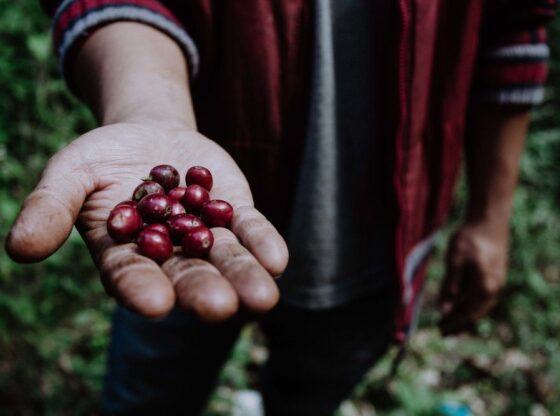![]()
COVID-19 has impacted conversations globally: Face Mask and Toilet Paper emojis are up, Travel and Haircut emojis are down on Twitter in 2020
In a little over two decades, emojis have gone from being a marketing trick to a popular method of communication that spans all languages.
Today, people all over the world are using emojis in Tweets, emails, and messaging apps to communicate and express emotion. In recognition of the importance of emojis in pop culture today, and #WorldEmojiDay which was 17th July, Twitter shares the Top 10 most popular emojis globally in the first half of 2020.
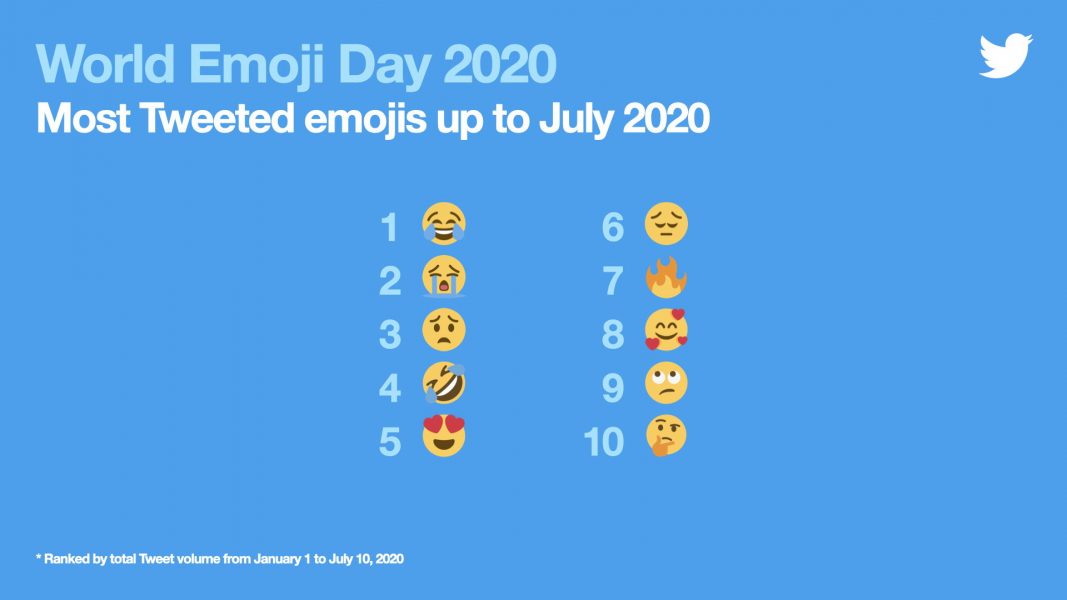
What is World Emoji Day?
The word ’emoji’ was added to the Oxford Dictionary in 2013 and one year later Jeremy Burge, the founder of Emojipedia, created World Emoji Day. Why on the 17th of July? The calendar icon shows 17th as the date and as a result, the 17th was chosen to be the official day of the emoji. 2020 is the seven anniversary.
What are emojis and how are they used?
Emojis are digital icons that resonate across cultures and allow for communication without language barriers. They are universal and used on Twitter prolifically. They can represent an emotion, an idea, and be used in place of words.
The impact of COVID-19 on global conversations and behaviour is evident in emoji usage trends compared to last year: there have been spikes in usage for the shopping cart, face mask and toilet paper emojis, alongside drops in usage for emojis related to travel, attending events and haircuts.
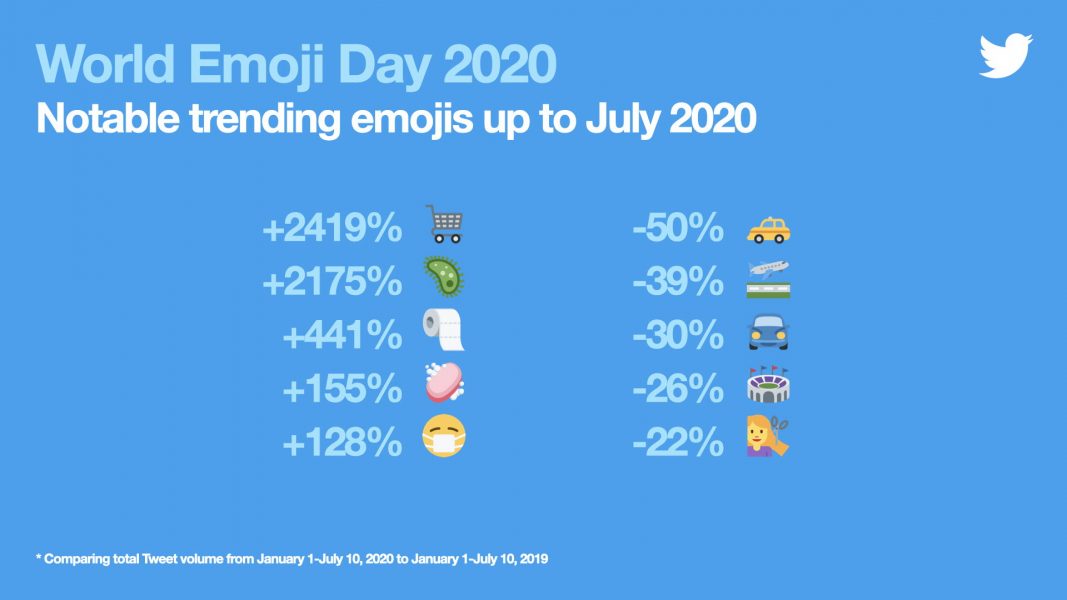
With emojis now part of everyday life, here are 4 current emoji trends on Twitter in Thailand:
1. Emoji-only conversations
Dropping the need for text, there’s a growing trend of Thais Tweeting solely with emojis. In a fun and entertaining way, people and brands are challenging others to Tweet about a subject using emojis only, or Tweeting out an emoji-only message and asking others to decipher the meaning.
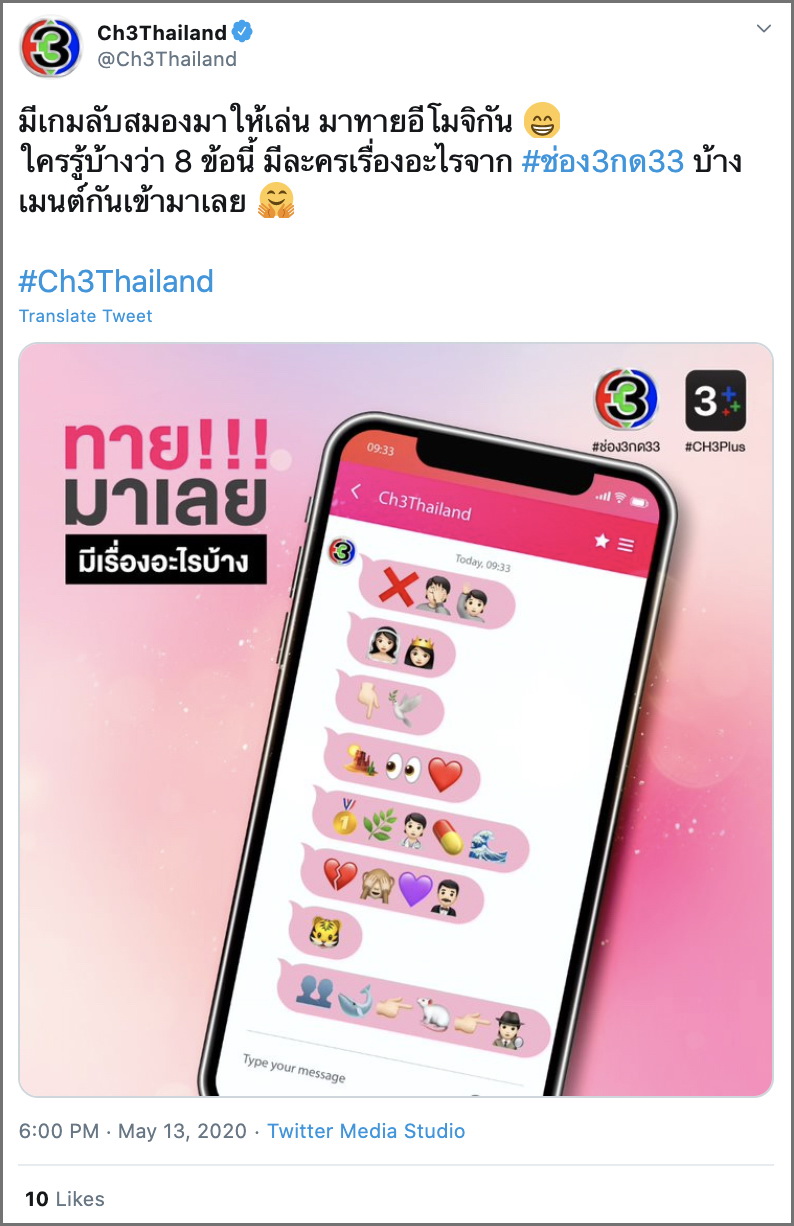
Embeddable Tweet: https://twitter.com/Ch3Thailand/status/1260525195716157440
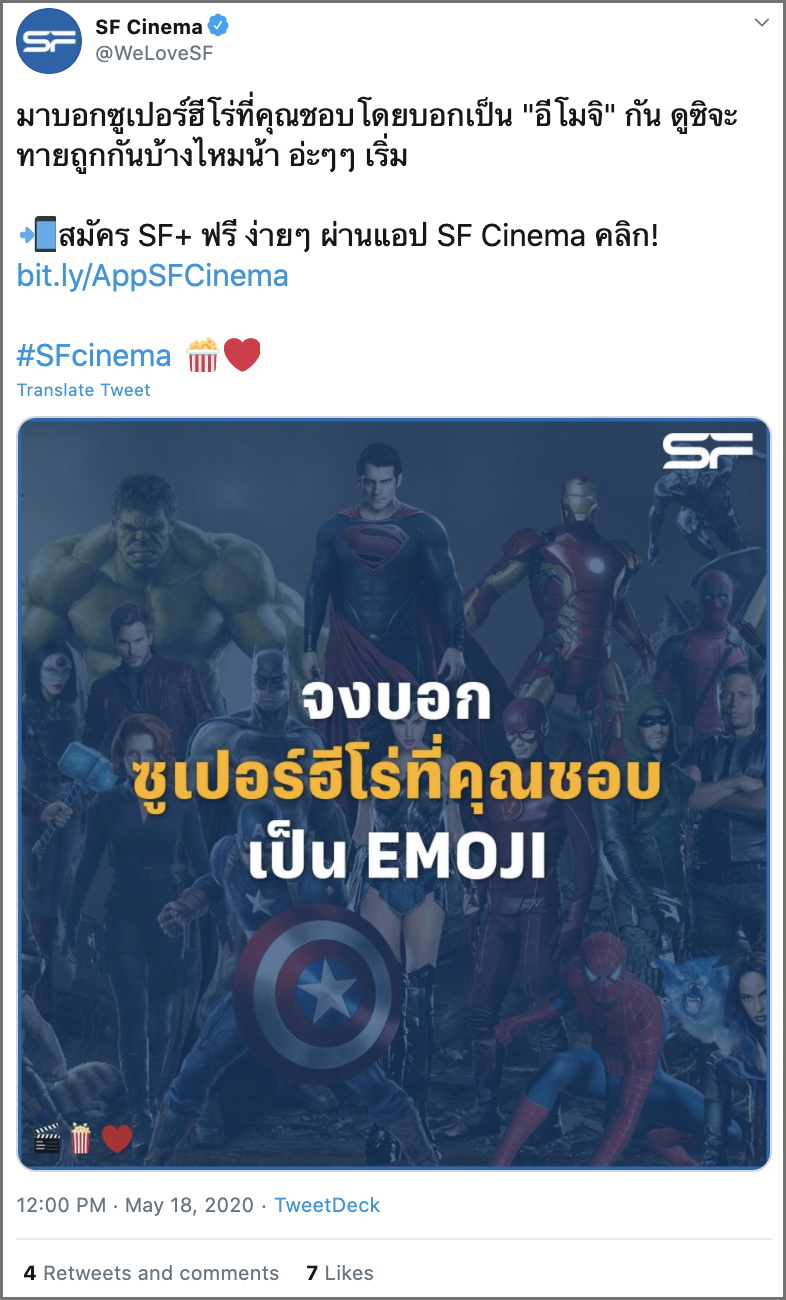
Embeddable Tweet: https://twitter.com/WeLoveSF/status/1262246535712120833
2. Sharing emotions through emojis
The range of emojis available on Twitter is huge, but it’s often those that show emotion that prove the most popular with Thai Tweeps. Happy, sad, crying, embarrassed, angry, laughing, shocked, love and many more, people are using emojis to convey their feelings in that moment.
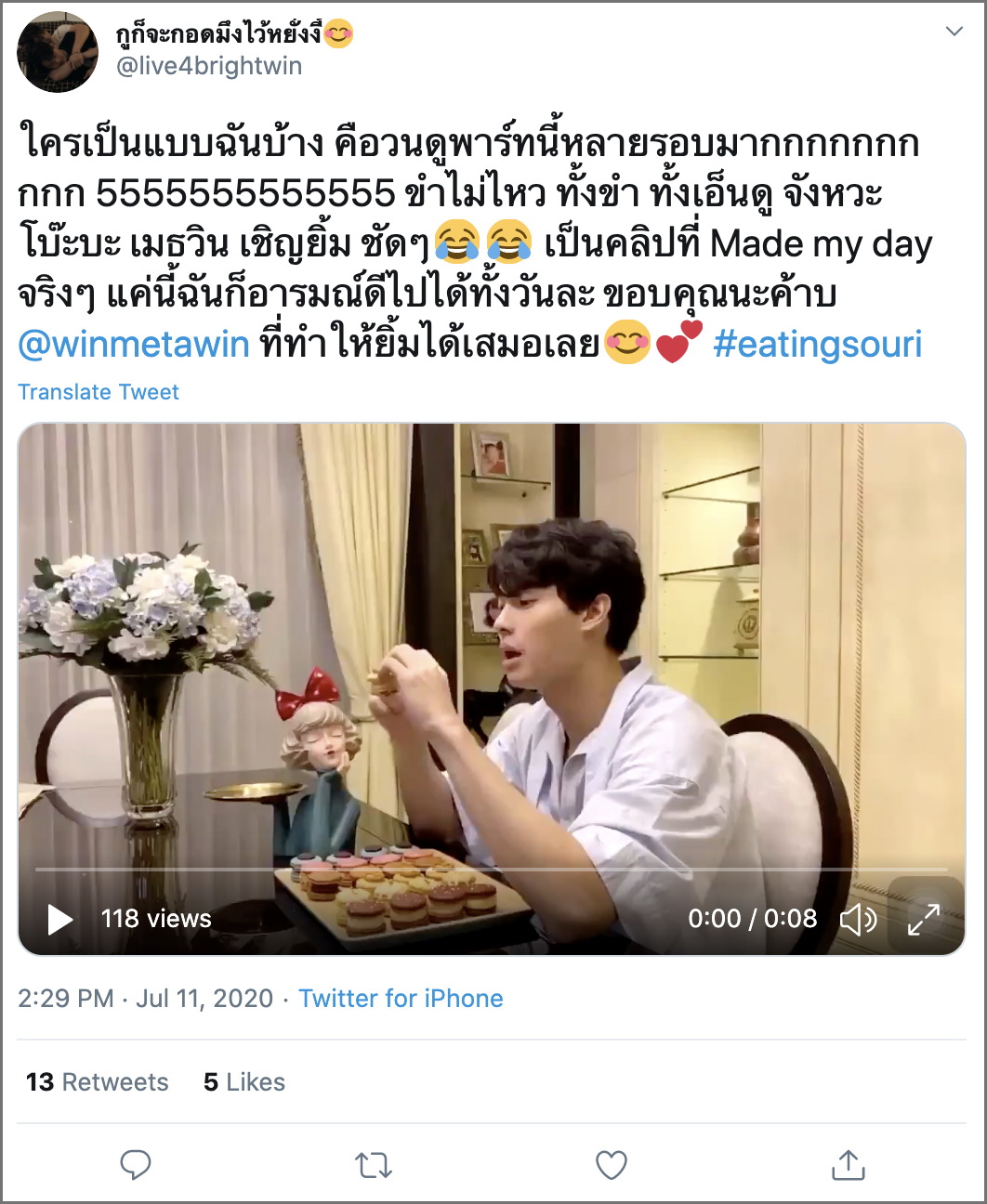
Embeddable Tweet: https://twitter.com/live4brightwin/status/1281853170117832705
3. Celebratory emojis
Recognising the importance of special occasions, national events and festivals in Thailand, Twitter have launched a number of Thailand-specific hashtag-triggered emojis such as for #Songkran, #ThaiNationalDay and #ASEANSummit.
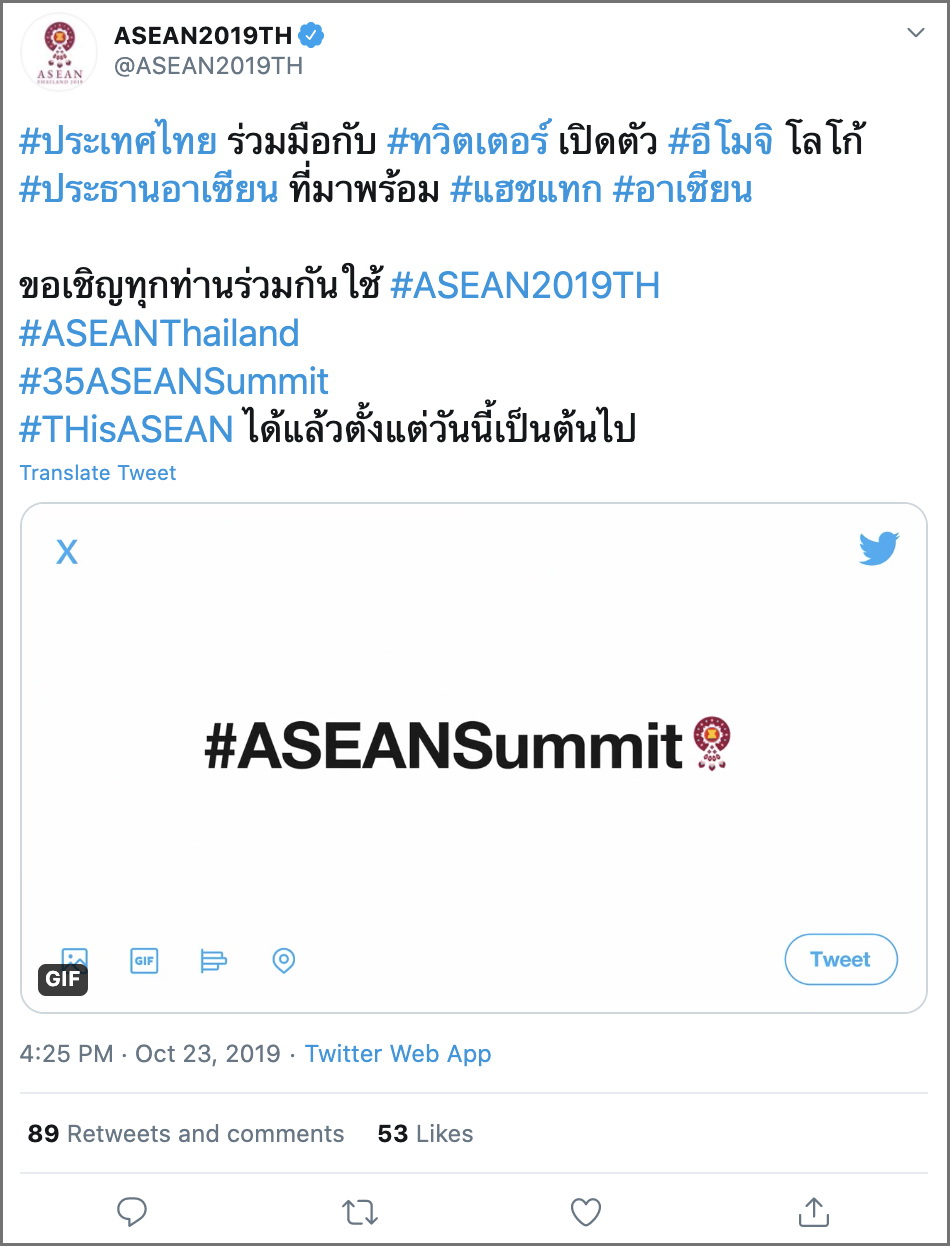
Embeddable Tweet: https://twitter.com/ASEAN2019TH/status/1186936754994995201
4. Branded emojis
While originally launched as a marketing gimmick, emojis have become an essential communication tool for many and today and on Twitter, brands are seeing the power of branded-emojis that are hashtag activated.
AIS recently worked with their presenters Bam Bam and Lisa to launch a co-branded emoji triggered by #AIS5Gที่1ตัวจริงxBAMBAMLISA and #AIS5GTheFutureIsYours.
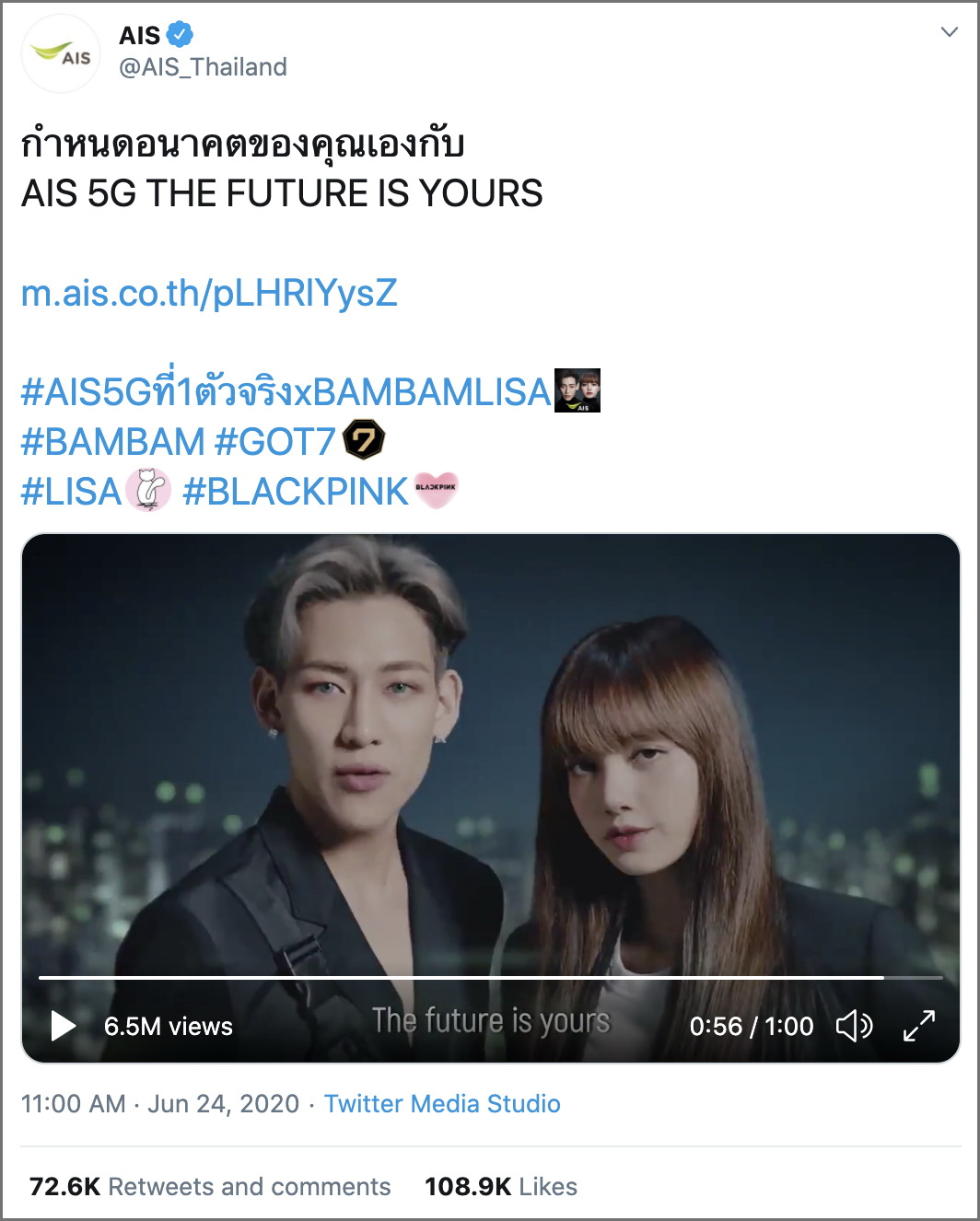
Embeddable Tweet: https://twitter.com/AIS_Thailand/status/1275639788914094089
Taking things one step further, Kpop supergroup, BLACKPINKOFFICIAL (@BLACKPINK), recently released individual emojis for each of the group’s artists; #Jennie, #Jisoo, #Lisa and #Rose.
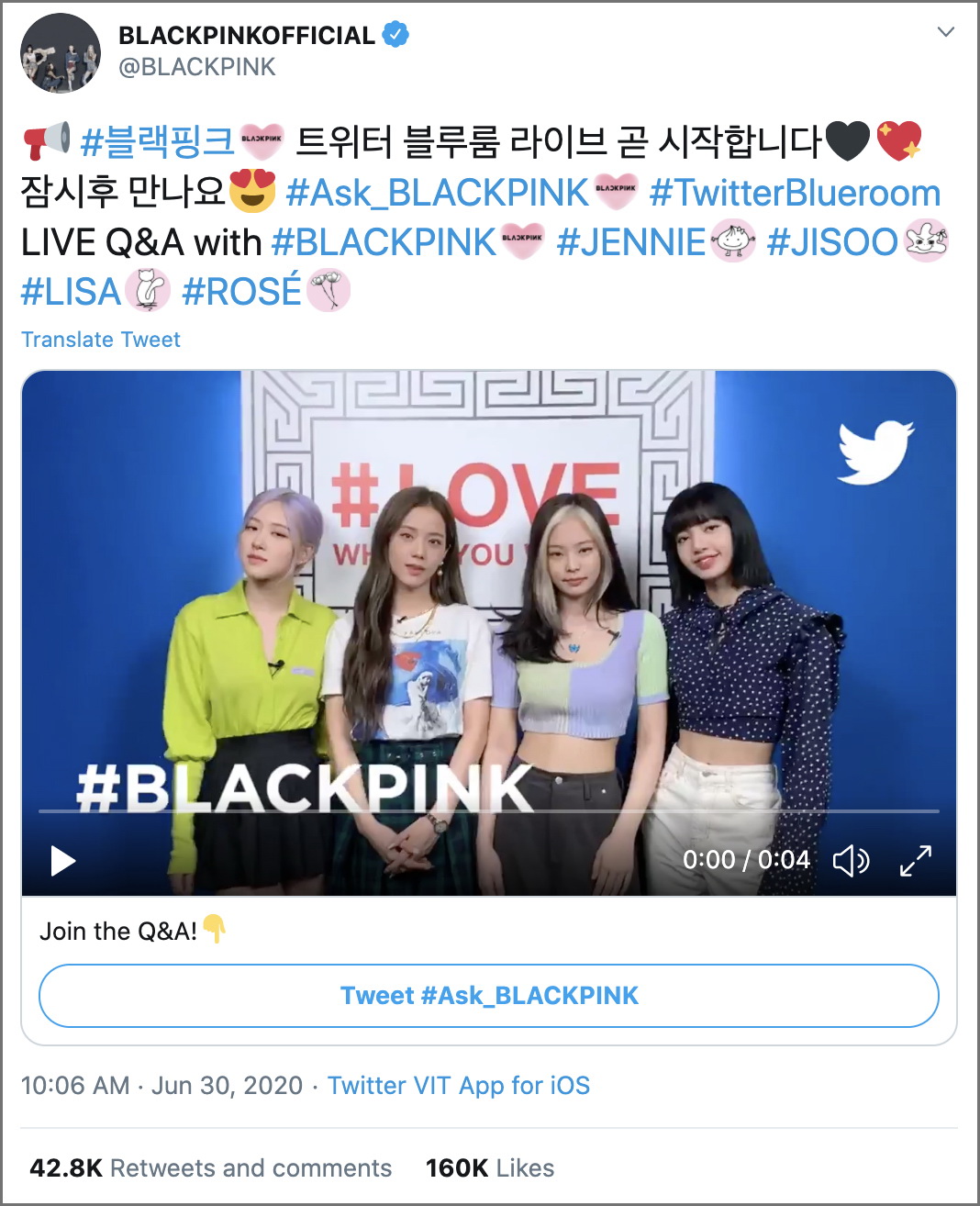
Embeddable Tweet: https://twitter.com/BLACKPINK/status/1277800579096432640





